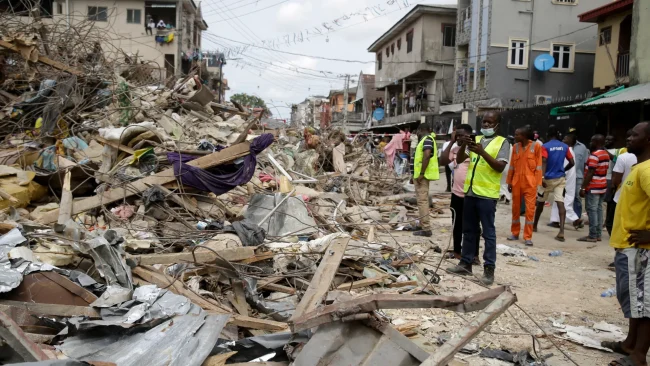Despite various measures canvassed and being implemented, collapse of buildings has assumed another dimension in Nigeria, especially Lagos State.
Apart from the existing structures that are caving in, buildings under construction are not left out in the latest structural failures.
The recurring incidents of building collapse have been a major concern to the built environment professionals, canvasing for a tougher measures to arrest the monster.
Many professionals have attributed the crisis to poor regulatory oversight, substandard construction practices, and widespread disregard for planning standards by developers and contractors.
Other blamed lack of enforcement of the National Building Code and infiltration of the sector by quacks for the recurring menace.
Speaking at a forum recently, a former Lagos State Commissioner for Physical Planning and Urban Development, Dr Idris Salako, described the situation as a national embarrassment.
In his lecture on: “Recurring Building Collapse in Lagos: The Challenge of Regulatory Oversight and Construction Practices,” Salako cited the data that showed that Lagos State accounted for more than half of all building collapses in Nigeria over the past five decades.
According to him, Nigeria had recorded 653 cases of building collapse between 1974 and May 2025, with Lagos accounting for over 322 of these incidents.
These failures , he said had resulted in the loss of over 1,600 lives nationwide, with Lagos State recording the highest.
He explained that the causes of these collapses are multi-layered, ranging from poor structural design, the use of substandard materials, inadequate site supervision, and unqualified personnel, among others.
Professor of Urban and Regional Planning at University of Lagos, Prof. Leke Oduwaye, identified weak regulatory oversight, manpower constraints, and poor professional accountability as key drivers of recurring building collapse in Lagos.
Professionals under the auspices the Building Collapse Prevention Guild (BCPG) have also expressed deed concerns, calling for stricter regulatory measures following the collapse of 659 buildings nationwide, which has resulted in the deaths of 1,621 people.
A former President of the BCPG, Mr. Kunle Awobodu, at the site of a collapsed three-storey building on Awolowo Way, Ota-Ona area of Ikorodu, Lagos State, where a parent lost two of their three children in the incident, said the figures of deaths from building collapse represented reported incidences of collapses between October 1974 and June, 2025.
ALSO READ FROM NIGERIAN TRIBUNE: ASUU directs members to begin nationwide strike
He advised regulatory agencies to respond promptly to alerts from members, artisans, and other professionals in the built environment, in order to address irregularities that could lead to building collapse.
The collapsed building in Ikorodu on Awolowo Way is the number 645 incidents, according to record.
He said:”Lagos accounts for 55.1 per cent of total collapsed buildings in Nigeria which makes it the epicentre of building collapse all over the world.”
He called on the government to intensify enforcement efforts, while urging members not to be discouraged, in spite of often providing valuable information that is not taken seriously.
Chairman of the BCPG Lagos State Chapter, Mr Joseph Akande, advised developers to always process building plans and obtain statutory documents, which served as authorisation to commence construction.
Akande appealed to developers not to embark on construction without following the statutory procedures to avoid collapse of buildings to save lives and properties.
Coordinator BCPG Ikorodu cell, MrKazeemIsiaka, appealed to state government to carry out thorough investigation to know the root cause of the building collapse in Ikorodu before confiscating the site.
Treasurer of the BCPG Lagos Chapter, Mrs. Faith Ezeugoh, appealed to contractors to avoid engaging quacks and to be willing to pay experts appropriately for proper supervision of building projects.
She urged developers to conduct proper project valuation before embarking on construction, in order to engage qualified professionals and use quality building materials.
WATCH TOP VIDEOS FROM NIGERIAN TRIBUNE TV
- Let’s Talk About SELF-AWARENESS
- Is Your Confidence Mistaken for Pride? Let’s talk about it
- Is Etiquette About Perfection…Or Just Not Being Rude?
- Top Psychologist Reveal 3 Signs You’re Struggling With Imposter Syndrome
- Do You Pick Up Work-Related Calls at Midnight or Never? Let’s Talk About Boundaries







